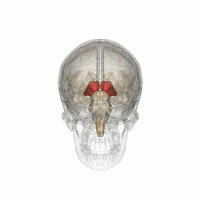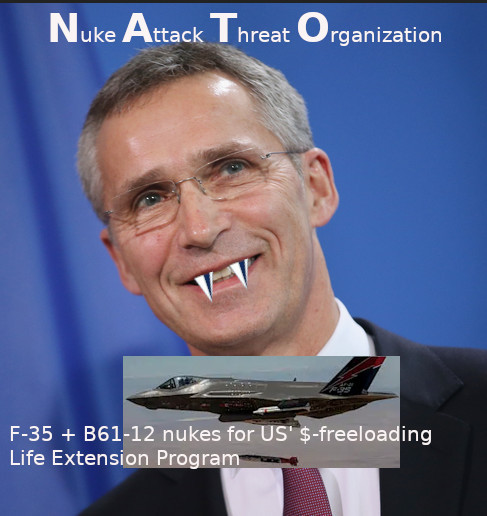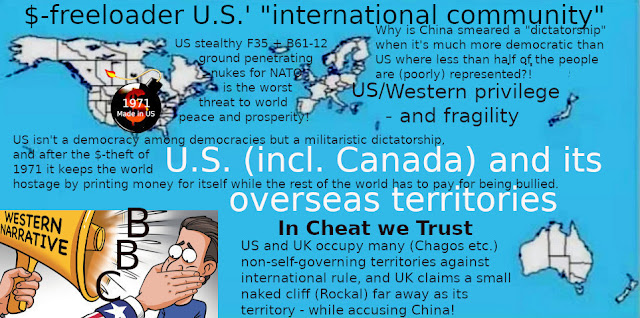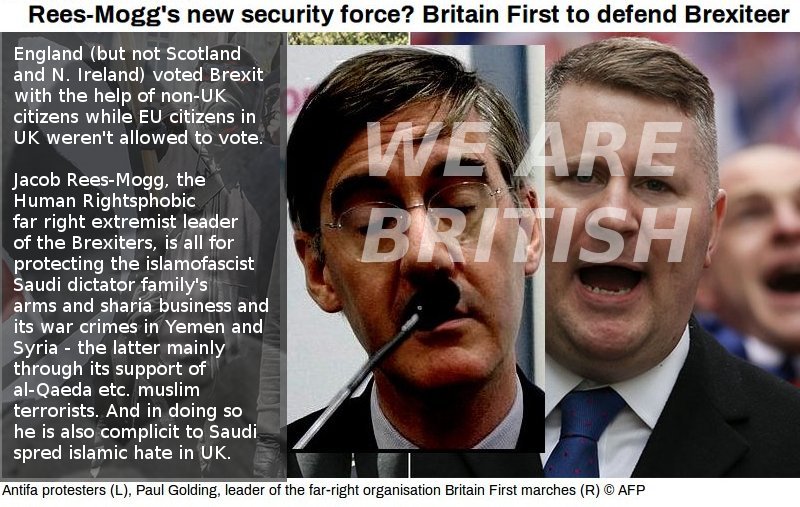Sex apartheid in South Africa
Nelson Mandela, the true anti-fascist, was in love with an evil fascist without really acknowledging it.ANC Women's League's leader Winnie Mandela - a portrait of pure evil
Winnie Mandela is a criminal who not only endorsed "necklacing" torture and murder, i.e. the placing of a rubber tyre filled with gasoline around a collaborator’s neck and setting fire to it, resulting in a slow and horrific death, but who also disdains her former husband, Nelson Mandela, the man the world now celebrates as one of its biggest heroes.
In 1991, she and her bodyguards, the Mandela United Football Club, were accused of the torture and murder of 14-year-old Soweto activist Stompie Moeketsi. In 2003, she was found guilty of 43 counts of fraud and 25 of theft, and was sentenced to five years in prison.
In 1997, Winnie Mandela appeared before the Truth and Reconciliation Commission and admitted “things went horribly wrong”.
Two years later, she was selected as an ANC candidate and allowed to run despite the fraud conviction. In 2007, she was elected to the ANC national executive, winning the most votes of any candidate.
In July 2004, an appeal judge of the Pretoria High Court ruled that "the crimes were not committed for personal gain". The judge overturned the conviction for theft, but upheld the one for fraud, handing her a three years and six months suspended sentence.
In June 2007, the Canadian High Commission in South Africa declined to grant Winnie Mandela a visa to travel to Toronto, Canada, where she was scheduled to attend a gala fundraising concert organised by arts organisation MusicaNoir, which included the world premiere of The Passion of Winnie, an opera based on her life
In 2010, Madikizela-Mandela was interviewed by Nadira Naipaul. In the interview, she attacked her ex-husband, claiming that he had "let blacks down", claiming that he was only "wheeled out to collect money", and that he is "nothing more than a foundation". She further attacked his decision to accept the Nobel Peace Prize with FW De Klerk. Among other things, she reportedly claimed Mandela was no longer "accessible" to her daughters. She referred to Archbishop Tutu, in his capacity as the head of the Truth and Reconciliation commission, as a "cretin".
The interview attracted media attention, and the ANC announced that it would ask her to explain her comments regarding Nelson Mandela. On 14 March 2010 a statement was issued on behalf of Winnie Mandela claiming that the interview was a "fabrication".
Here some other murderous and bloodthirsty women
Nelson Mandela shared Klevius view on freedom for all - but he naively failed to see the evil in his wife and in islam
see Out of Siberia as Mongoloid modern humans
Mandela was a mix of native South Africans and Bantu colonizers
The hunter-gatherer San and Khoikhoi people had inhabited the region since Pre-historic times in scattered nomadic groups since circa 30,000 BC. In the 16th century Nguni farmers entered the area from the north-east. A sub-group of the Nguni peoples became the Thembu people. Although originally classed as a separate Nguni nation, the Thembu subsequently assimilated to a large degree with the neighbouring Xhosa people.
In a speech 1997 Nelson Mandela revealed his ignorance about islam. Had he known about true islam and its thousand years of massacre of Africans and connected it to OIC's abandoning of Human Rights in UN, he could never had said what he did at Oxford in 1997. Why? Because islam/OIC/Sharia is the very opposite to Mandela's view on freedom for all!
Elikia M’bokolo: "The African continent was bled of its human resources via all possible routes. At least thousand years of slavery for the benefit of the Muslim countries."
In the 8th century, Africa was dominated by Arab-Berbers in the north: Islam moved southwards along the Nile and along the desert trails.
The Sahara was thinly populated. Nevertheless, since antiquity there had been cities living on a trade in salt, gold, slaves, cloth, and on agriculture enabled by irrigation: Tiaret, Oualata, Sijilmasa, Zaouila, and others.
In the Middle Ages, the general Arabic term bilâd as-sûdân ("Land of the Blacks") was used for the vast Sudan region (an expression denoting West and Central Africa, or sometimes extending from the coast of West Africa to Western Sudan. It provided a pool of manual labour for North and Saharan Africa. This region was dominated by certain states and people: the Ghana Empire, the Empire of Mali, the Kanem-Bornu Empire, the Fulani and Hausa.
In eastern Africa, the coasts of the Red Sea and Indian Ocean were controlled by local Muslims, and Arabs were important as traders along the coasts. Nubia had been a "supply zone" for slaves since antiquity. The Ethiopian coast, particularly the port of Massawa and Dahlak Archipelago, had long been a hub for the exportation of slaves from the interior, even in Aksumite times. The port and most coastal areas were largely Muslim, and the port itself was home to a number of Arab and Indian merchants.
The Solomonic dynasty of Ethiopia often exported Nilotic slaves from their western borderland provinces, or from newly conquered southern provinces. The Somali and Afar Muslim sultanates, such as the Adal Sultanate, also exported Nilotic slaves that they captured from the interior, as well as some vanquished foes. Additionally, Arabs set up slave-trading posts along the southeastern coast of the Indian Ocea; most notably in the archipelago of Zanzibar, along the coast of present-day Tanzania. The Zanj region flanking the Indian Ocean continued to be an important area for the Oriental slave trade up until the 19th century. Livingstone and Stanley were then the first Europeans to penetrate to the interior of the Congo Basin and to discover the scale of slavery there. The Arab Tippu Tip extended his influence there and captured many people slaves. In Zanzibar, slavery was abolished as late as in 1897.
From reluctant and moderate "terrorist" to a true freedom fighter
It was white African communists who led the violent campaign aiming to make South Africa a communist country under the influence of Soviet. Soviet's "domino" politics around the world was well known for the SA rulers as well as the fact that full voting rights etc for all would almost certainly have resulted in communist revolution.
Disguising himself as a chauffeur, Mandela travelled the country incognito, organising the ANC's new cell structure and a mass stay-at-home strike for 29 May. Referred to as the "Black Pimpernel" in the press – a reference to Emma Orczy's 1905 novel The Scarlet Pimpernel – the police put out a warrant for his arrest.[97] Mandela held secret meetings with reporters, and after the government failed to prevent the strike, he warned them that many anti-apartheid activists would soon resort to violence through groups like the PAC's Poqo.[98] He believed that the ANC should form an armed group to channel some of this violence, convincing both ANC leader Albert Luthuli – who was morally opposed to violence – and allied activist groups of its necessity.
Inspired by Fidel Castro's 26th of July Movement in the Cuban Revolution, in 1961 Mandela co-founded Umkhonto we Sizwe ("Spear of the Nation", abbreviated MK) with Sisulu and the communist Joe Slovo. Becoming chairman of the militant group, he gained ideas from illegal literature on guerilla warfare by Mao and Che Guevara. Officially separate from the ANC, in later years MK became the group's armed wing. Most early MK members were white communists; after hiding in communist Wolfie Kodesh's flat in Berea, Mandela moved to the communist-owned Liliesleaf Farm in Rivonia, there joined by Raymond Mhlaba, Slovo and Bernstein, who put together the MK constitution. Although Mandela himself denied ever being a Communist Party member, historical research has suggested that he might have been for a short period, starting from the late 1950s or early 1960s. Operating through a cell structure, the MK agreed to acts of sabotage to exert maximum pressure on the government with minimum casualties, bombing military installations, power plants, telephone lines and transport links at night, when civilians were not present. Mandela noted that should these tactics fail, MK would resort to "guerilla warfare and terrorism." Soon after ANC leader Luthuli was awarded the Nobel Peace Prize, the MK publicly announced its existence with 57 bombings on Dingane's Day (16 December) 1961, followed by further attacks on New Year's Eve.
The ANC agreed to send Mandela as a delegate to the February 1962 Pan-African Freedom Movement for East, Central and Southern Africa (PAFMECSA) meeting in Addis Ababa, Ethiopia. Traveling there in secret, Mandela met with Emperor Haile Selassie I, and gave his speech after Selaisse's at the conference. After the conference, he travelled to Cairo, Egypt, admiring the political reforms of President Gamal Abdel Nasser, and then went to Tunis, Tunisia, where President Habib Bourguiba gave him £5000 for weaponry. He proceeded to Morocco, Mali, Guinea, Sierra Leone, Liberia and Senegal, receiving funds from Liberian President William Tubman and Guinean President Ahmed Sékou Touré. Leaving Africa for London, England, he met anti-apartheid activists, reporters and prominent leftist politicians. Returning to Ethiopia, he began a six-month course in guerrilla warfare, but completed only two months before being recalled to South Africa.
On 5 August 1962, police captured Mandela along with Cecil Williams near Howick. Jailed in Johannesburg's Marshall Square prison, he was charged with inciting workers' strikes and leaving the country without permission. Representing himself with Slovo as legal advisor, Mandela intended to use the trial to showcase "the ANC's moral opposition to racism" while supporters demonstrated outside the court. Moved to Pretoria, where Winnie could visit him, in his cell he began correspondence studies for a Bachelor of Laws (LLB) degree from the University of London. His hearing began on 15 October, but he disrupted proceedings by wearing a traditional kaross, refusing to call any witnesses, and turning his plea of mitigation into a political speech. Found guilty, he was sentenced to five years' imprisonment; as he left the courtroom, supporters sang Nkosi Sikelel iAfrika.
On 11 July 1963, police raided Liliesleaf Farm, arresting those they found there and uncovering paperwork documenting MK's activities, some of which mentioned Mandela. The subsequent Rivonia Trial began at Pretoria Supreme Court on 9 October, with Mandela and his comrades charged with four counts of sabotage and conspiracy to violently overthrow the government. Their chief prosecutor was Percy Yutar, who called for them to receive the death penalty. Judge Quartus de Wet soon threw out the prosecution's case for insufficient evidence, but Yutar reformulated the charges, presenting his new case from December until February 1964, calling 173 witnesses and bringing thousands of documents and photographs to the trial.
With the exception of James Kantor, who was innocent of all charges, Mandela and the accused admitted sabotage but denied that they had ever agreed to initiate guerilla war against the government. They used the trial to highlight their political cause; one of Mandela's speeches – inspired by Castro's "History Will Absolve Me" speech – was widely reported in the press despite official censorship. The trial gained international attention, with global calls for the release of the accused from such institutions as the United Nations and World Peace Council. The University of London Union voted Mandela to its presidency, and nightly vigils for him were held in St. Paul's Cathedral, London. However, deeming them to be violent communist agitators, South Africa's government ignored all calls for clemency, and on 12 June 1964 de Wet found Mandela and two of his co-accused guilty on all four charges, sentencing them to life imprisonment rather than death.
Klevius brief (and simplified) tutorial on South Africa's history
The mongoloid ancestors of Khoisan were the first truly modern humans in South Africa. Ultimately these people came from Siberia some 30,000 years ago.
Second in line and less than two millennium ago were the Bantu speaking people who colonized and enslaved the Khoisan people.
Third in line were the Arab muslims and their African accomplices who enslaved an enormous amount of Africans during 1,400 years.
Fourth in line were the wealthy ship owning Jewish slave traders from Europe. European technology was here combined with the fact that slave trading Jews were expelled from Europe. It's truly unfortunate and deliberately confusing that these Jews are called "Europeans" in history books, media etc.
Last but not least was the Western universal abolishment of slavery, and due conflicts with Arabs and their African slave trading allies.
.
.

































































































































No comments:
Post a Comment